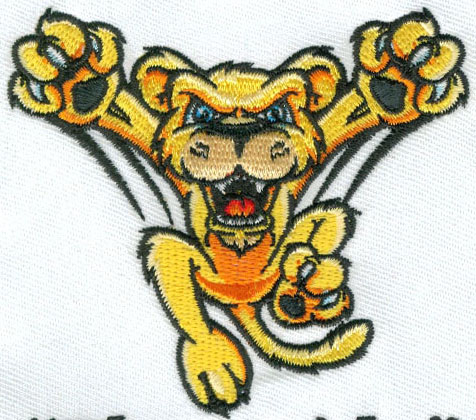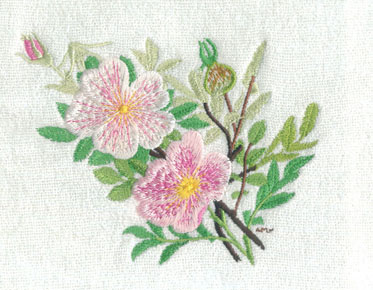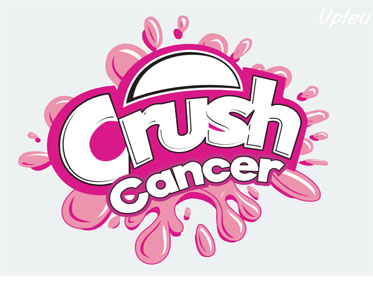It’s All About Embroidery Digitizing
Embroidery digitizing is the process of creating a software pattern to be used on embroidery machines. In traditional embroidery machines, the design is created using a variety of types of embroidery stitches and colors in order to create individualized designs.
Editing: Changing aspects of the
design through computerized editing capabilities. Most features or programs
allow the user to scale the design up and down, edit block by block or pin by
pin, then merge letters with the design, move aspects of the design, and insert
or edit the machine's commands.
Emblem: Other names for badges are
"badge" or "patch." The finished edge of the embroidery
design, usually the mark of the logo, was usually worn on the outerwear and,
most importantly, historically the logo always carried a motto, verse or
implied moral lesson.
Embroidery: It refers here to machine
embroidery, or more specifically, computerized machine embroidery. This is a
computer-controlled process for embroidery machines to create patterns on
textiles. It is used for commercial product branding, corporate advertising and
uniform decoration. There are many hobbyists who also do some machine
embroidery for personal sewing and craft projects. Today, most modern or
digital embroidery machines are equipped with computers designed specifically
for embroidery.
These machines range from
single-needle, single-head sewing machines and hobbyists for home or personal
use, to commercial and industrial embroidery machines with multiple heads
(commonly 6 to 20) and multiple needles under each head (commonly 9 to 15),
depending on their function and purpose. They all have a framing system that
pulls the frame area of the fabric taut under a sewing needle and allows it to
move to design according to a pre-programmed digital document prepared by the
hole punch.
Extended format: It is a design
program or feature in which individual stitches in the design have been
precisely digitized to a specific size. Designs digitized in this format
generally cannot be enlarged or slightly higher than 10 to 20 percent without
distortion because the number of stitches remains the same.
File format: The most important part
of embroidery digitization is embroidery file format, which can be roughly
divided into two categories. (1) Source format: It is specific to the software
used to create the design, for which the punch retains the original file for
editing. (2) Machine format: It is specific to a particular brand of machine
embroidery, and these machine formats usually contain splicing data (offset)
and machine functions (trim, jump, etc.) that are not easy to scale or edit
without a lot of manual work.
Filler stitch or fill: Another name
for filler stitch is tatami stitch. Generally large design areas or broad
design areas covered by a series of running stitches whose patterns may vary in
stitch length, Angle, and density.
Frame: It can use a variety of means
to maintain stability during the embroidery process, including clamps, magnets
or springs, vacuum devices. It holds a device for inserting goods under the
embroidery head.
Lettering: There are several uses for
letters or words in the digitization of embroidery. Lettering, often called
"keyboard lettering," is created by using an embroidery lettering
program on a PC that allows for variations in the style, size, height, density,
and other characteristics of the letters.
Lock stitch: Another name is
"lock" or "secure" stitch. Locking stitches are formed by
three or four consecutive stitches with at least 10 points of motion. It should
be used at the end of all fills, columns, and any elements in the design that
must follow the jumper, such as color changes or finishing of the design. Lock
stitch can be sewn into star, triangle or straight stitch. Locking stitch is
also the name for the kind of stitch formed by the crochet of a home sewing
machine, or you might say a computerized embroidery machine.
Logo: It is a symbol or graphic symbol
commonly used by organizations, offices or companies, or even individuals, to
assist and promote immediate public recognition. Logos can be entirely graphic
ICONS or symbols, or simply the name of a company or organization or a
combination of both.
Variable size: This is used to scale
the design to various sizes.
The finishing touches of embroidery
digitizing
Finishing: Once embroidery is
complete, a number of processes must be performed, including trimming loose
threads, cutting or ripping off excess backing, cleaning any stains, removing
toppings, packaging for sale or shipping, and pressing or steaming to remove
wrinkles or hoop marks.
Underlay: Underlay is an important
part of the digitizing of embroidery. And embroidery digital operation is
very much. Applied before other design elements A) stitching to create special
design effects such as depth and dimension; B) Neutralizing fabric surface
characteristics.
Zigzag: The stitches are made by
alternating angles (z-z); Usually used for final stitching of bucket twill and
decals.
Flagging: This is usually caused by
improper framing (hoops) of goods. Marking may cause unsatisfactory stitching
to form and the nest or poor registration.



